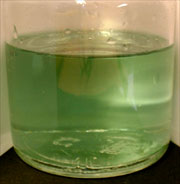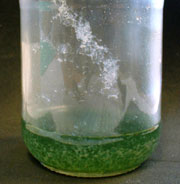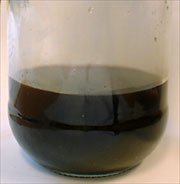
News By CASA
Australia January 9, 2000. On December 22 1999, the Civil Aviation Safety Authority (CASA) was advised by Mobil Australia of a contamination problem with Avgas 100/130. Avgas 100/130 (green in colour) is used by piston-engine aircraft. This contamination was discovered following engine stoppage incidents, reports of electric boost pump failures and reports of black sticky deposits on brass components in aircraft fuel systems including filters, carburettor components and fuel pumps. The contaminant has been identified as the chemical ethylene di-amine, which is used in Mobil's Avgas refining process. An increase in the dosage of ethylene di-amine used by Mobil in November caused an unexpected reaction in the Avgas which led to the contamination of this fuel. Aircraft owners and operators were directed to check fuel systems for evidence of this problem before further flight.
Over the weekend of 8 and 9 January 2000, CASA was advised that a second form of the contaminant had been found in an aircraft which had been cleaned of the original contaminant. The second contaminant product is white or clear and typically forms in fuel tanks when the ethylene di-amine comes in contact with carbon dioxide. The black or dark purple form of the contaminant product occurs when the ethylene di-amine reacts with the copper in brass or bronze fuel system parts. As a result of the discovery of the second and hard to detect contaminant product, CASA took the decision on Monday 10 January to ground all affected aircraft until further notice. CASA issued an Airworthiness Directive which grounded all aircraft that had used the suspect Mobil fuel. The suspect fuel was produced from Mobil's Altona refinery in Melbourne from 21 November 1999 to 23 December 1999. It was sold throughout Victoria, NSW, Tasmania, ACT and Queensland below Townsville.
Shell avgas low lead (blue in colour) has never been affected by the contamination and aircraft that have used Shell exclusively can continue to operate normally. Avgas produced by BP's Kwinana refinery in Western Australia is also free from any contamination. This fuel is sold throughout Western Australia, the Northern Territory and most of South Australia. Avgas in north Queensland above Townsville is either imported or comes from Shell or the Kwinana refinery.
Almost 5000 piston-engine aircraft in Australia have been grounded as a result of the Mobil fuel contamination. CASA has dedicated all available resources to the Avgas contamination problem in an attempt to resolve the issues quickly and enable affected aircraft to return to the air. CASA is working urgently with Mobil Oil Australia, aircraft and engine manufacturers and the wider aviation industry to solve the current Avgas fuel contamination problem. The contamination has led to the grounding of up to 5000 piston-engine aircraft.



Black/purple deposits formed after reaction with brass or bronze components